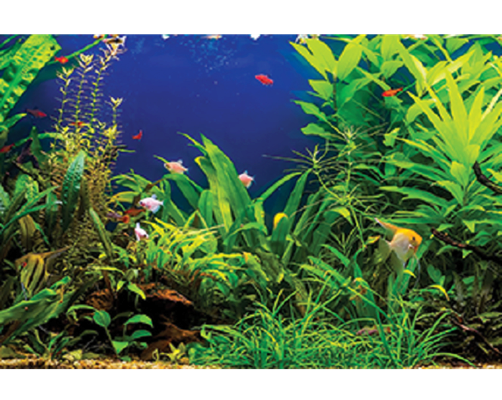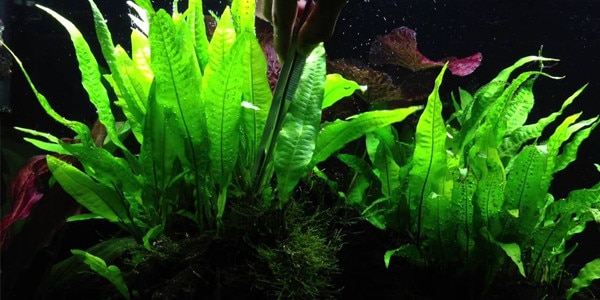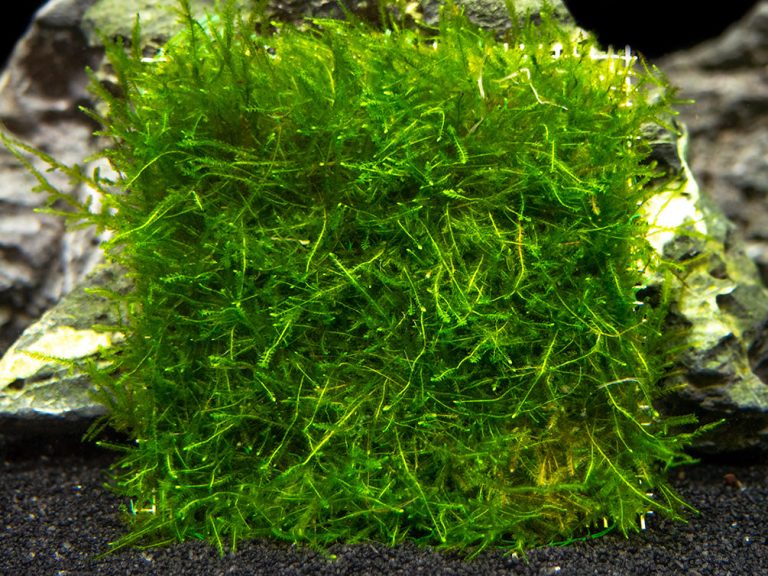How to Clean Live Plants before Putting in Aquarium: Pro Tips
To clean live plants before putting them in an aquarium, rinse them under lukewarm water and trim dead leaves. Remove any visible pests manually.
Aquarium enthusiasts know the importance of adding live plants to their tanks. Live plants enhance the beauty and balance the ecosystem. However, introducing plants without proper cleaning can harm the aquatic environment. Cleaning eliminates pests, algae, and harmful chemicals. Start by rinsing the plants under lukewarm water to remove surface debris.
Trim any dead or decaying leaves to promote healthy growth. Inspect the plants closely for pests and remove them manually. Using a mild bleach solution can disinfect the plants, but ensure thorough rinsing to avoid harming fish. Properly cleaned plants will thrive, contributing to a healthier and more vibrant aquarium.
Importance Of Cleaning Plants
Cleaning live plants before placing them in your aquarium is crucial. It ensures a healthy environment for your fish. Unclean plants can introduce pests and algae. These can harm your aquatic life. Let’s dive into why cleaning is important.
Preventing Pests
Live plants can harbor unwanted pests. These pests can harm your fish. Cleaning the plants helps remove these pests. Here are some common pests to watch out for:
- Snails
- Insect larvae
- Parasites
Snails can overpopulate your aquarium quickly. Insect larvae can become a nuisance. Parasites can cause diseases in fish.
| Pest | Impact |
|---|---|
| Snails | Overpopulation, plant damage |
| Insect larvae | Annoyance, potential fish harm |
| Parasites | Fish diseases |
Avoiding Algae
Algae can quickly take over your aquarium. Cleaning plants helps prevent algae introduction. Algae can make your tank look dirty. It can also affect water quality.
Here are some steps to avoid algae:
- Rinse plants under running water.
- Soak plants in a bleach solution (5% bleach).
- Rinse thoroughly to remove bleach.
- Quarantine plants before introducing them to the tank.
Rinsing plants removes visible dirt and debris. The bleach solution kills algae spores. Quarantining ensures no pests or algae remain.

Credit: www.reddit.com
Gathering Necessary Supplies
Cleaning live plants before putting them in your aquarium is essential. It prevents harmful pests and diseases from entering your aquatic environment. The first step is gathering all the necessary supplies. This ensures a smooth and effective cleaning process.
Tools Needed
Having the right tools is crucial for cleaning live plants. Here’s a list of the tools you’ll need:
- Soft brush: For gently scrubbing the plants.
- Bucket: To soak and rinse the plants.
- Scissors: For trimming damaged leaves or roots.
- Gloves: To protect your hands from chemicals.
Choosing Safe Solutions
Choosing the right solutions is vital for plant health. Here are some safe options:
| Solution | Purpose | Mixing Ratio |
|---|---|---|
| Bleach | Disinfects and kills algae | 1 part bleach to 19 parts water |
| Potassium Permanganate | Removes parasites | 1 teaspoon per 2 gallons of water |
| Hydrogen Peroxide | Eliminates bacteria and fungi | 3% solution, undiluted |
Ensure you rinse the plants thoroughly after using any solution. This removes any chemical residue and keeps your fish safe.
Initial Rinse
Cleaning live plants before adding them to your aquarium is crucial. The initial rinse helps remove dirt and potential pests. This step ensures your aquatic environment remains healthy.
Using Tap Water
Start by rinsing the plants under lukewarm tap water. Hold each plant gently to avoid damage. The water flow should be steady but not too strong. This helps remove loose debris and dirt. Make sure to rinse all parts, including leaves and roots.
Inspecting For Debris
After rinsing, inspect the plants for any remaining debris. Look closely at the leaves and stems. Use your fingers to remove any visible dirt. If necessary, use a soft brush for delicate areas. Check for pests like snails and insects. Remove any you find to prevent contamination.

Credit: www.aqueon.com
Soaking In Solution
Ensuring your live plants are clean before placing them in your aquarium is crucial. One effective method is soaking in solution. This process eliminates harmful pests and bacteria. Let’s explore how you can do this effectively.
Bleach Solution
A bleach solution is a powerful tool for cleaning plants. Use a mix of 5% bleach and 95% water. This concentration is safe for most plants.
- Mix 1 part bleach with 19 parts water.
- Soak the plants for 2-3 minutes.
- Rinse thoroughly with clean water.
Ensure all bleach is removed. Leftover bleach can harm your aquarium life. Rinse the plants several times to be safe.
Alternative Treatments
Not all plants can tolerate bleach. There are other ways to clean them.
| Treatment | Details |
|---|---|
| Potassium Permanganate | Mix 1 teaspoon in 1 gallon of water. Soak for 10 minutes. |
| Hydrogen Peroxide | Use a 3% solution. Soak plants for 5 minutes. |
| Vinegar Solution | Mix equal parts of vinegar and water. Soak for 5 minutes. |
After using any of these treatments, rinse the plants with clean water. This step is essential to remove any residue.
Rinsing And Removing Residues
Cleaning live plants before placing them in your aquarium is essential. This process ensures your plants are free of harmful residues and pests. One of the most critical steps is Rinsing and Removing Residues. This helps maintain a healthy environment for your aquatic life.
Thorough Rinse
Start by giving your plants a thorough rinse under running water. Hold each plant gently and wash away any dirt and debris. Use your fingers to rub the leaves and stems carefully. This helps remove any visible residues.
Place the plant in a clean bowl of water. Swirl it around to dislodge any remaining particles. Repeat the process until the water remains clear. This step ensures that your plants are free from surface contaminants.
Checking For Leftovers
After rinsing, inspect the plants for any leftover debris. Look closely at the leaves and stems. Use a magnifying glass if needed. Pay special attention to the undersides of the leaves.
Remove any remaining residues using a soft brush or cloth. Be gentle to avoid damaging the plant. This careful inspection ensures no hidden dirt remains. Clean plants help keep your aquarium environment safe.
| Steps | Actions |
|---|---|
| Thorough Rinse | Rinse plants under running water, rub leaves and stems. |
| Clean Bowl | Swirl plants in clean water until clear. |
| Check for Leftovers | Inspect for debris, use a soft brush to clean. |
By following these steps, you ensure your live plants are clean. This helps maintain a healthy aquarium for your fish and other aquatic life.

Credit: www.wikihow.pet
Quarantining Plants
Quarantining plants before placing them in your aquarium is crucial. It ensures they are free from pests and diseases. This process helps maintain the health of your aquatic ecosystem. Let’s explore the essential steps involved in quarantining plants.
Duration
The duration for quarantining plants is typically around two to four weeks. This period allows you to observe the plants for any signs of pests or diseases. During this time, keep the plants in a separate container. Ensure the container has proper lighting and water conditions similar to your aquarium.
Here’s a simple table to help you understand the steps better:
| Step | Description |
|---|---|
| Step 1 | Place plants in a separate container. |
| Step 2 | Provide proper lighting and water conditions. |
| Step 3 | Observe for two to four weeks. |
Monitoring Health
Regularly check the health of the quarantined plants. Look for signs of discoloration, holes, or unusual growth. Use a magnifying glass to spot tiny pests. If you notice any issues, treat the plants immediately. Here are some common signs to watch for:
- Discoloration: Yellow or brown leaves.
- Holes: Small or large holes in leaves.
- Unusual growth: Twisted or stunted growth.
A healthy plant will have vibrant colors and no visible damage. Ensure the water is clean and free from contaminants. Regular water changes can help maintain plant health.
Use these simple steps to quarantine and monitor your plants effectively.
Planting In The Aquarium
Getting your live plants ready for the aquarium is crucial. Clean plants ensure a healthy environment for fish. This section guides you on how to plant these clean plants in your aquarium.
Proper Placement
Proper placement of live plants is key to a thriving aquarium. Arrange plants according to their light needs. Place taller plants in the back. Shorter plants go in the front. This creates a natural look and helps with light distribution.
Use a table to plan your placement:
| Plant Type | Light Requirement | Placement |
|---|---|---|
| Amazon Sword | Medium to High | Back |
| Java Fern | Low to Medium | Middle |
| Dwarf Hairgrass | High | Front |
Ensuring Stability
Stability of plants is essential for growth. Ensure roots are firmly in the substrate. Use small rocks or weights if needed. This helps prevent floating plants.
Steps to ensure stability:
- Dig a small hole in the substrate.
- Place the plant’s roots in the hole.
- Cover the roots with substrate.
- Add small rocks if the plant floats.
Stable plants will grow better and look natural.
Ongoing Maintenance
Keeping your aquarium plants healthy requires regular care. Ongoing maintenance ensures plants thrive. It keeps your aquarium clean and beautiful.
Regular Checks
Regular checks are crucial for plant health. Inspect plants weekly for signs of trouble. Look for yellowing leaves or algae growth. Remove dead or decaying leaves promptly. Use a soft brush to clean any debris. Ensure plants are firmly rooted in the substrate.
Dealing With Issues
Sometimes, plants face problems. Quick action can save them. If you see algae, gently scrape it off. Use algae-eating fish or snails to help. If leaves turn yellow, check for nutrient deficiencies. Add liquid fertilizer if needed. If plant growth slows, check your lighting. Ensure plants get enough light daily. Trim plants regularly to promote growth.
| Issue | Action |
|---|---|
| Algae | Scrape off gently, add algae-eaters |
| Yellow Leaves | Check nutrients, add fertilizer |
| Slow Growth | Check lighting, trim plants |
Keep a close eye on your plants. Regular checks and quick fixes keep them healthy. Your aquarium will look stunning.
Frequently Asked Questions
How To Clean Live Plants For An Aquarium?
Rinse the plants under running water. Remove any visible debris or dirt. Use a soft brush to gently scrub the leaves and stems. Soak the plants in a mild bleach solution (1 part bleach to 19 parts water) for 5 minutes.
Rinse thoroughly before adding to the aquarium.
Can Bleach Harm Aquarium Plants?
Yes, bleach can harm plants if not used properly. Always use a diluted solution (1 part bleach to 19 parts water). Soak for only 5 minutes. Rinse thoroughly with dechlorinator-treated water to remove any bleach residue.
How Long To Soak Plants In Bleach Solution?
Soak the plants for about 5 minutes. This duration is enough to kill algae and pests without harming the plants. Rinse thoroughly after soaking to remove any bleach residue.
Is It Necessary To Quarantine New Plants?
Yes, quarantining new plants helps prevent the introduction of pests, algae, and diseases into your aquarium. Keep them in a separate tank for at least a week. This allows you to observe and treat any issues before adding them to the main tank.
Conclusion
Ensuring your aquarium plants are clean is crucial for a healthy tank. Proper cleaning prevents pests and diseases. Follow the steps outlined to enjoy a thriving underwater ecosystem. Your fish and plants will thank you for the extra care. Happy aquascaping!




